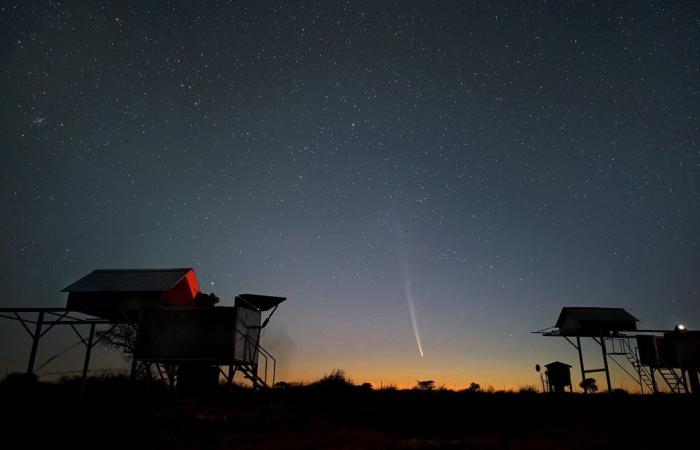The images from the southern hemisphere are so promising that amateur astronomers in this country will be on the lookout for the tail of the comet “C/2023 A3 Tsuchinshan Atlas” in the next few days. The impressively long tail could already be visible low on the horizon before the comet should show itself in all its glory at dusk from Saturday (October 12th) – provided the weather cooperates. However, it doesn’t look like that everywhere, at least at the weekend.
According to the current forecasts from Geosphere Austria, a front will approach from the west on Saturday, perhaps there will be a glimpse of the comet in southern and eastern Austria, according to the APA’s request. From Monday onwards there will be better opportunities for observation if fields of fog do not obstruct the view of the celestial spectacle.
Only discovered in 2023
“Tsuchinshan Atlas” was discovered in early 2023 by observatories in China and South Africa. The object comes from the Oort cloud, a spherical shell-shaped collection of objects in the outer regions of the solar system, and orbits the sun on an extremely long orbit, according to Alexander Pikhard from the Vienna Working Group for Astronomy (WAA). The comet reached its closest point to the Sun (perihelion) on September 27th, but was not yet visible from Central Europe at that time.
The comet has already appeared in the southern hemisphere, and spectacular images have come from there. “As expected, the comet developed both in terms of brightness and appearance, as in the textbook,” explained comet expert and chairman of the Martinsberg Astronomical Center (Lower Austria), Michael Jäger, to the APA. Over the past few days, he and colleagues have observed and photographed the “Tsuchinshan Atlas” from Namibia. The comet was as bright as the brightest stars in the sky (1st magnitude), and the very long tail was more than 20 degrees long in the sky. For comparison: the apparent diameter of the moon is about half a degree.
Sightings also possible over the western horizon from October 12th
Jäger expects “that the comet will appear just above the western horizon in a very transparent sky from the evening of October 12th as an object of the 2nd magnitude (i.e. about as bright as the Polar Star, note).” Pikhard assumes that “Tsuchinshan Atlas” will be visible to the naked eye at dusk and will remain so for a good week before it becomes too faint and can only be seen with binoculars. But even in the first days of clear vision, binoculars are advisable and help find the comet at dusk, says Pikhard.
According to Jäger, the comet’s tail could be spectacularly long – “definitely significantly longer than the 20 degrees we had in Namibia.” We will know more as soon as the comet appears in our evening sky.
Starting next Saturday, Martinsberg (Lower Austria) invites you to watch together again and again, if the weather is right. The WAA also organizes observation evenings at the Vienna Sophienalpe in Vienna-Penzing, weather conditions permitting.
Service: Further information: https://go.apa.at/bUIz0BFD and https://go.apa.at/bUD3in5Q






